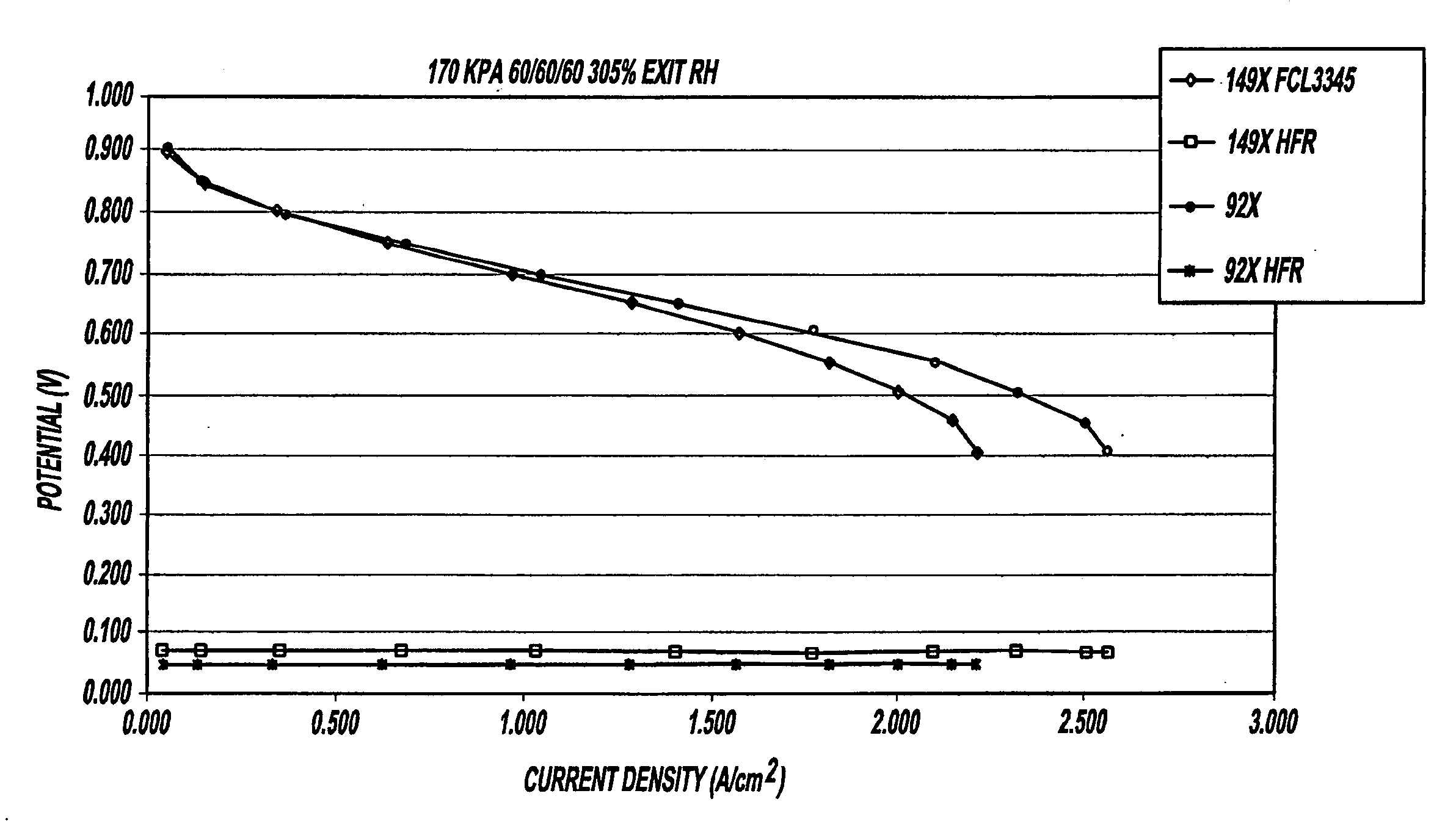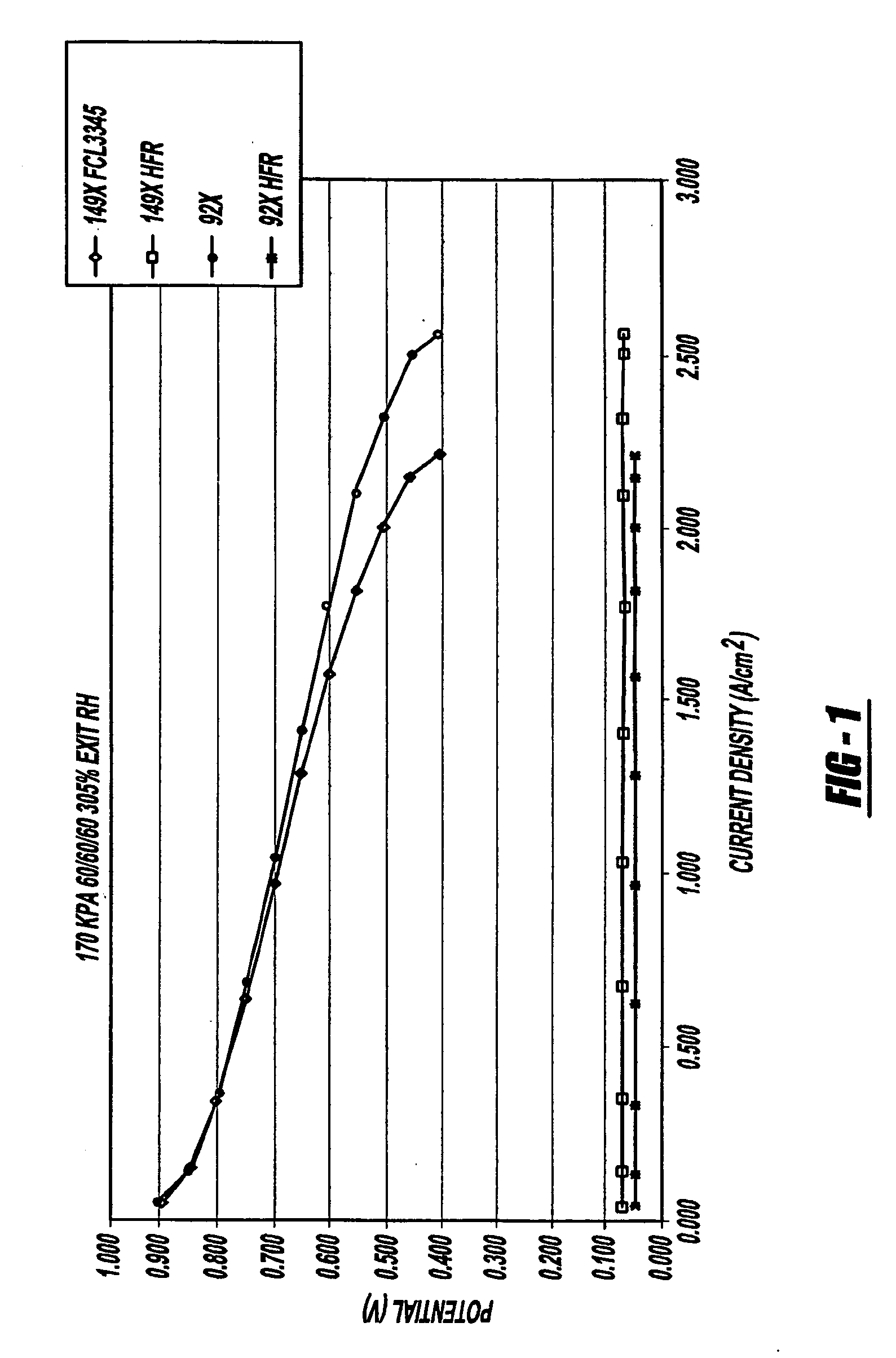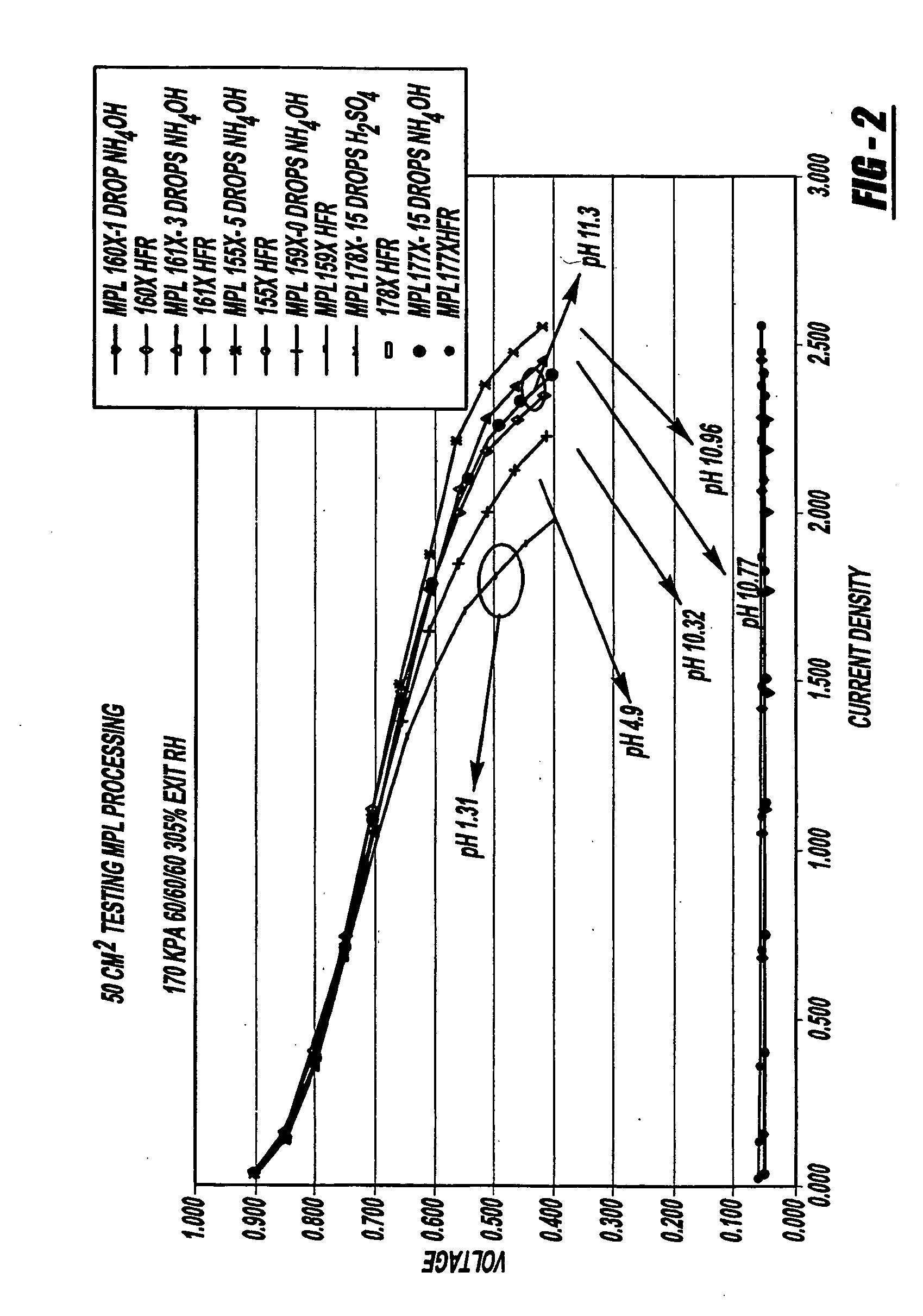Altering zeta potential of dispersions for better HCD performance and dispersion stability
a technology of dispersions and zeta potential, which is applied in the direction of non-metal conductors, cell components, conductors, etc., can solve the problems of high cost of catalysts, relatively expensive manufacturing of membrane electrode assemblies, and inability to meet the requirements of hcd performance and stability, and achieves the effect of improving hcd performance and dispersion stability
- Summary
- Abstract
- Description
- Claims
- Application Information
AI Technical Summary
Benefits of technology
Problems solved by technology
Method used
Image
Examples
example
[0027] To a 125 ml bottle, 2.4g acetylene black carbon, 32 ml isopropyl alcohol, 37 ml de-ionized H2O, and 0.2 g ammonium carbonate ((NH4)2CO3) was added. Ceramic beads were then added to fill one third of the bottle volume, and the dispersion was ball-milled at 120 rpm for 21 hours. Upon removal, the pH was measured to be 8.82. Polytetrafluoroethylene (PTFE) in the form of DuPont T-30 solution was added in the amount of 1.33 g, and the, dispersion was shaken by hand and coated on a T060 paper, sintered and tested.
[0028] Referring to FIG. 1, there is shown a graphical illustration of voltage versus current density characteristics of two pH-adjusted ink dispersion samples of the present invention. FIG. 1, in particular, illustrates the comparison of pH adjustment of the samples during the milling process.
[0029] The carbon can be comprised of any number of materials, including but not limited to carbon black such as VULCAN XC-72 (Cabot Corp., Alpharetta, Ga.), Black Pearls, Ketjen B...
PUM
| Property | Measurement | Unit |
|---|---|---|
| zeta potential | aaaaa | aaaaa |
| pH | aaaaa | aaaaa |
| zeta potential | aaaaa | aaaaa |
Abstract
Description
Claims
Application Information
 Login to View More
Login to View More - R&D
- Intellectual Property
- Life Sciences
- Materials
- Tech Scout
- Unparalleled Data Quality
- Higher Quality Content
- 60% Fewer Hallucinations
Browse by: Latest US Patents, China's latest patents, Technical Efficacy Thesaurus, Application Domain, Technology Topic, Popular Technical Reports.
© 2025 PatSnap. All rights reserved.Legal|Privacy policy|Modern Slavery Act Transparency Statement|Sitemap|About US| Contact US: help@patsnap.com



